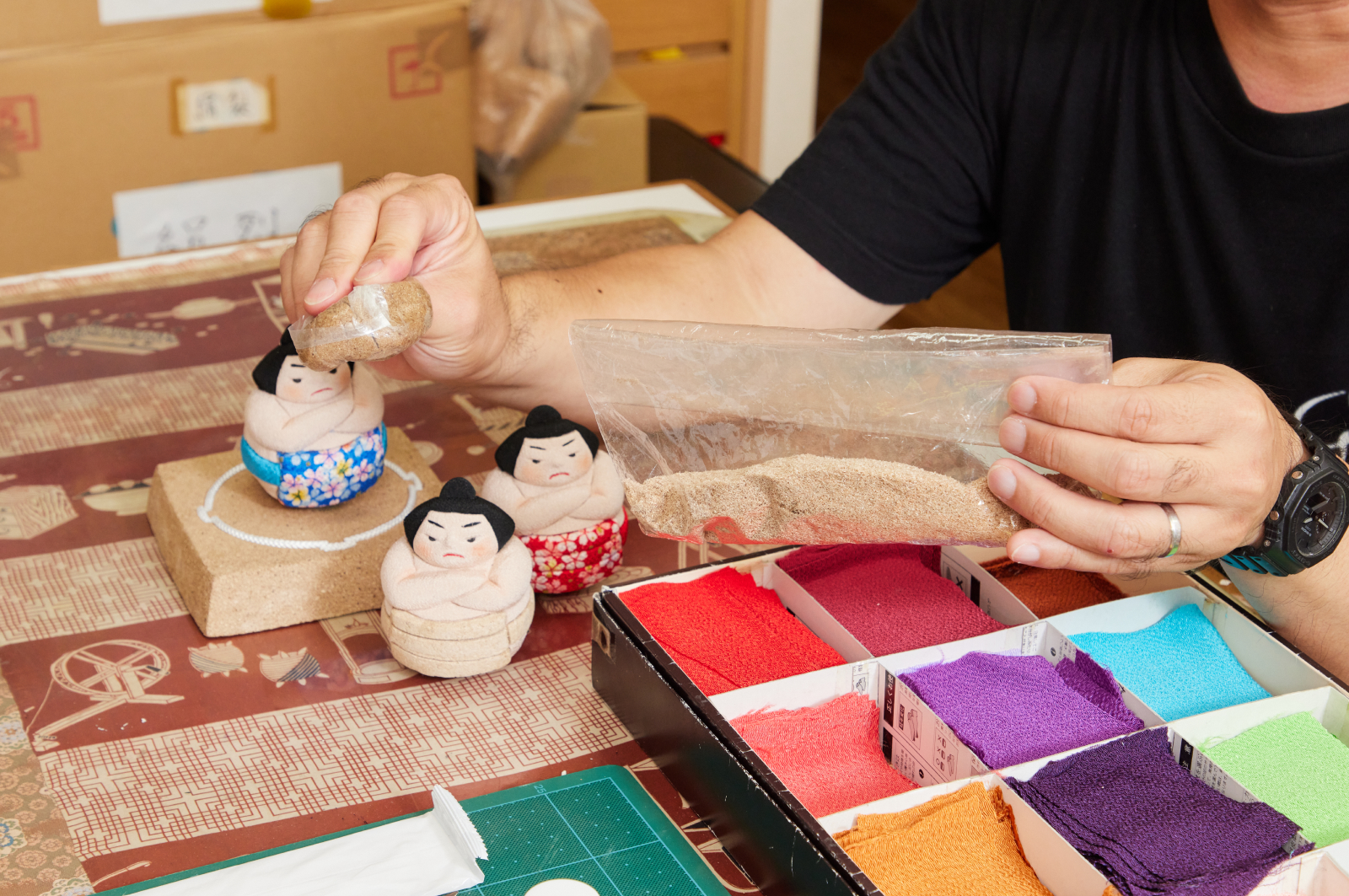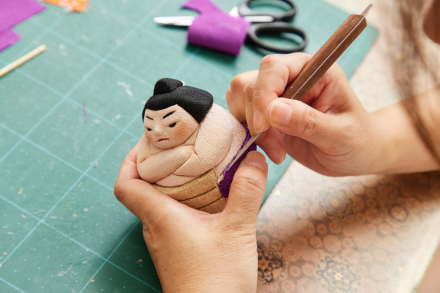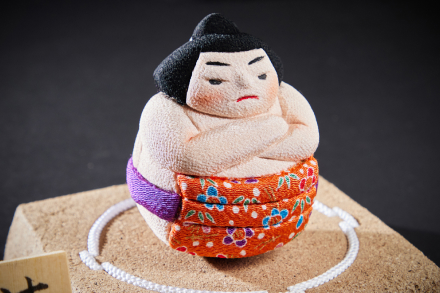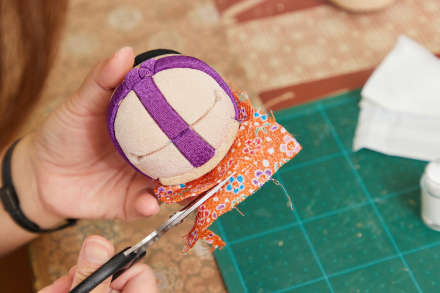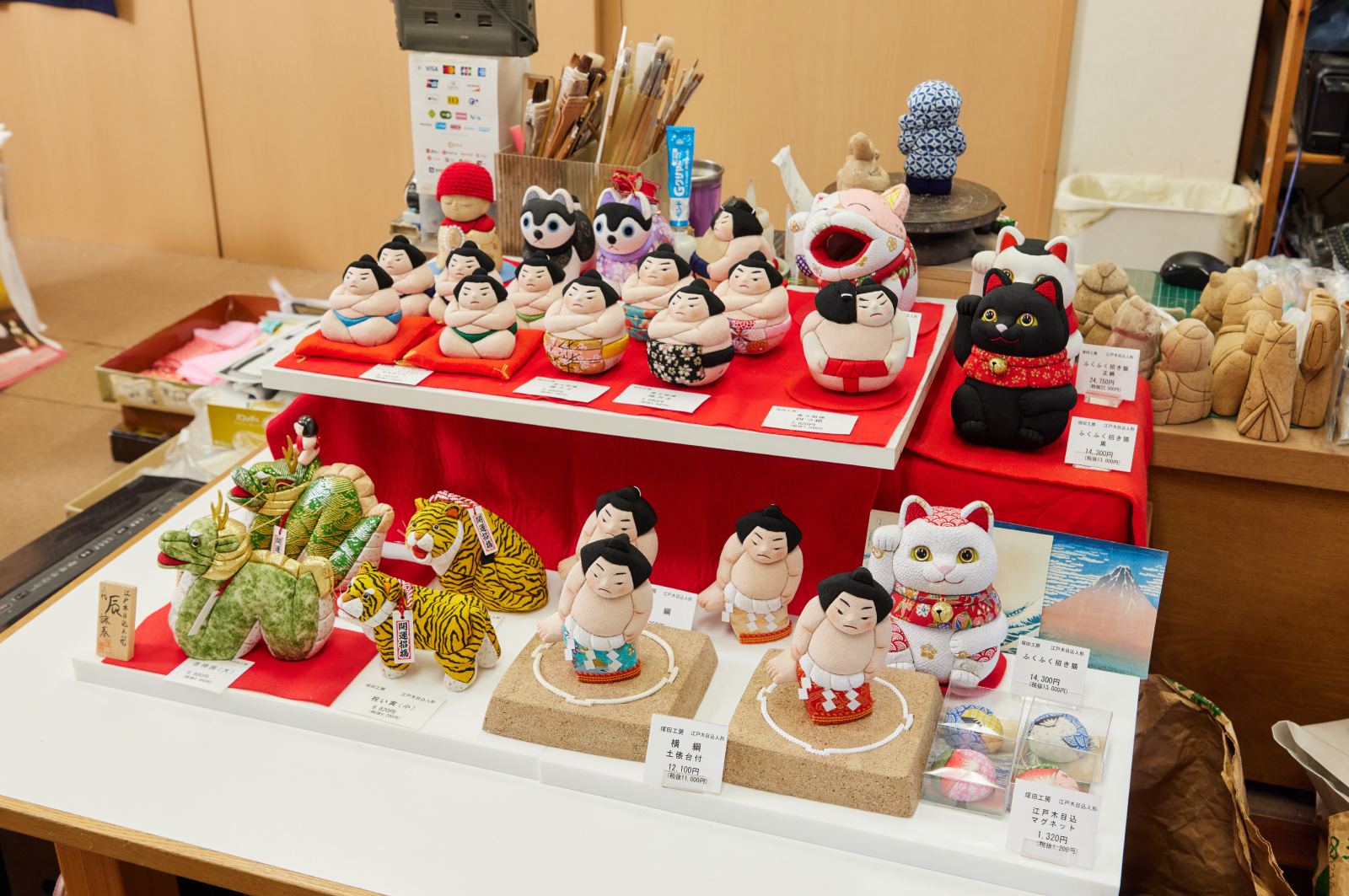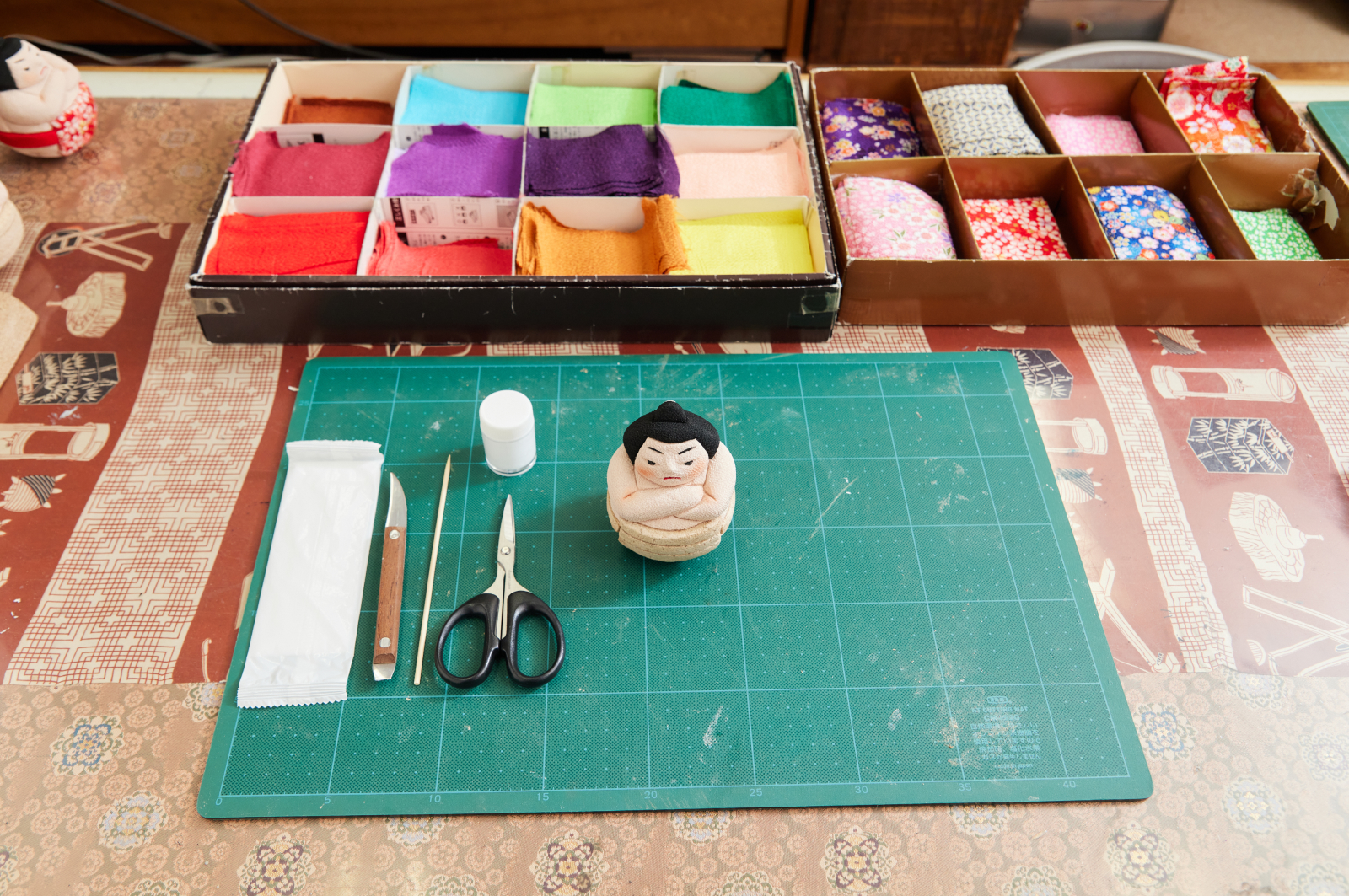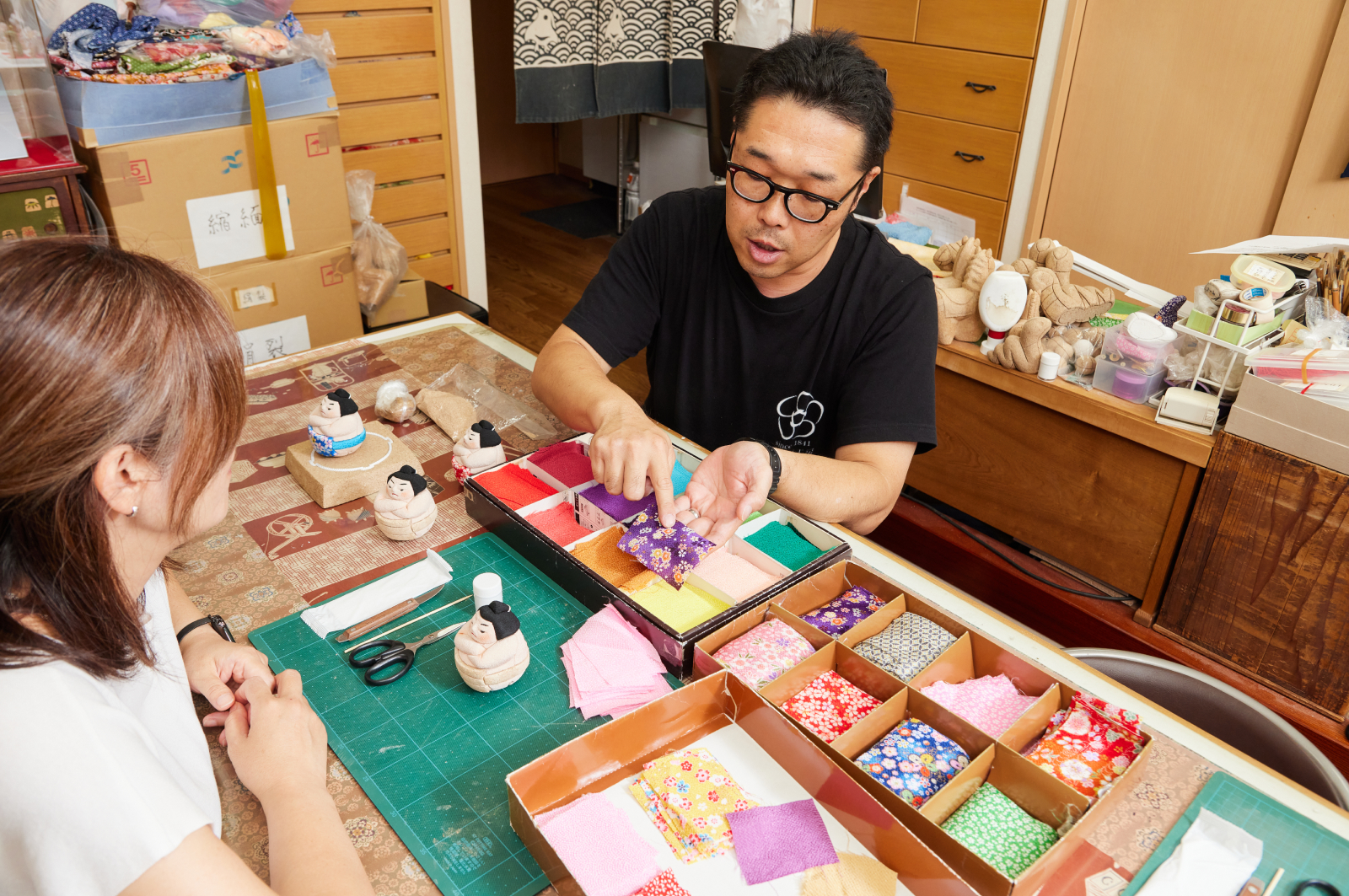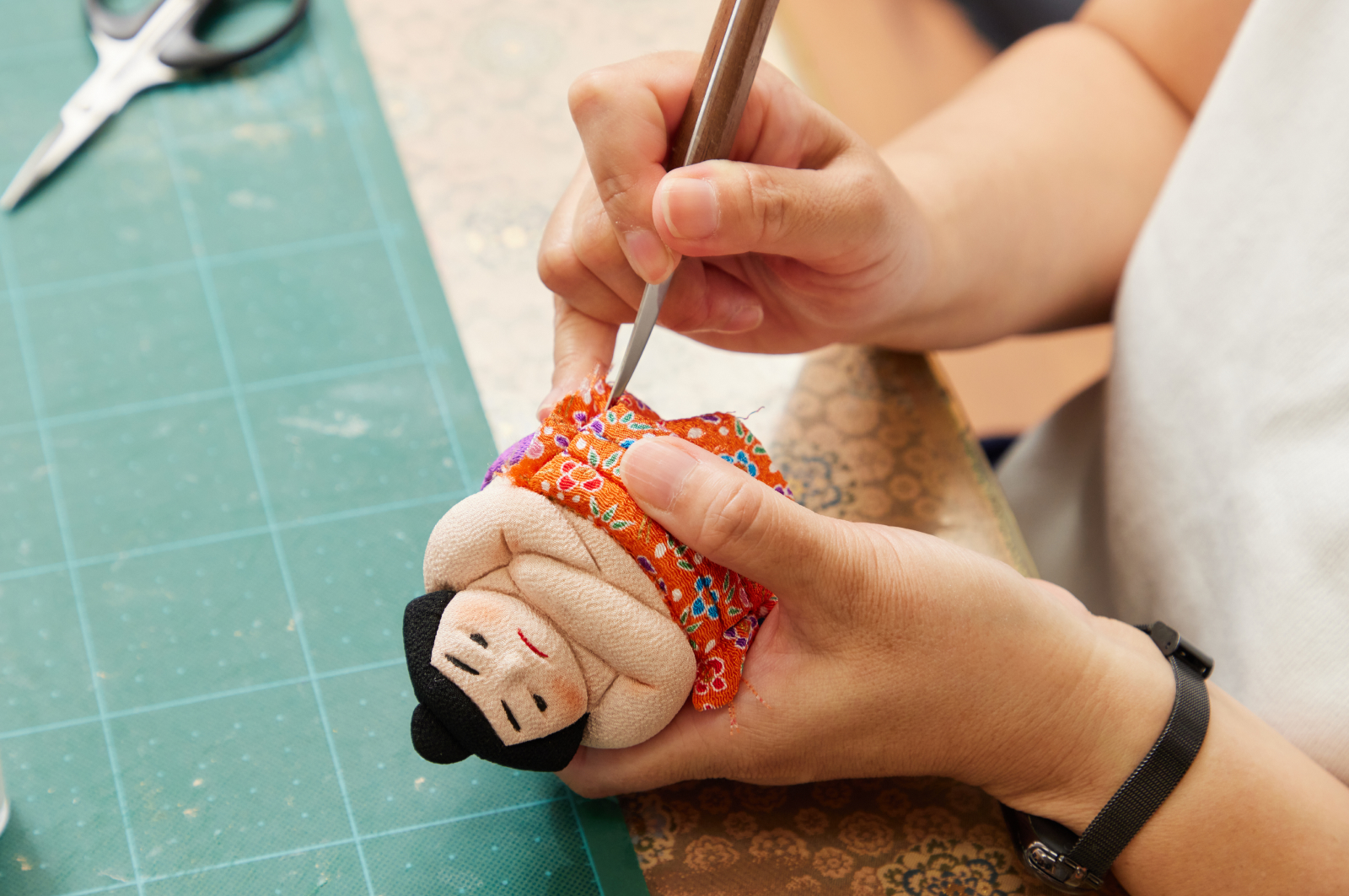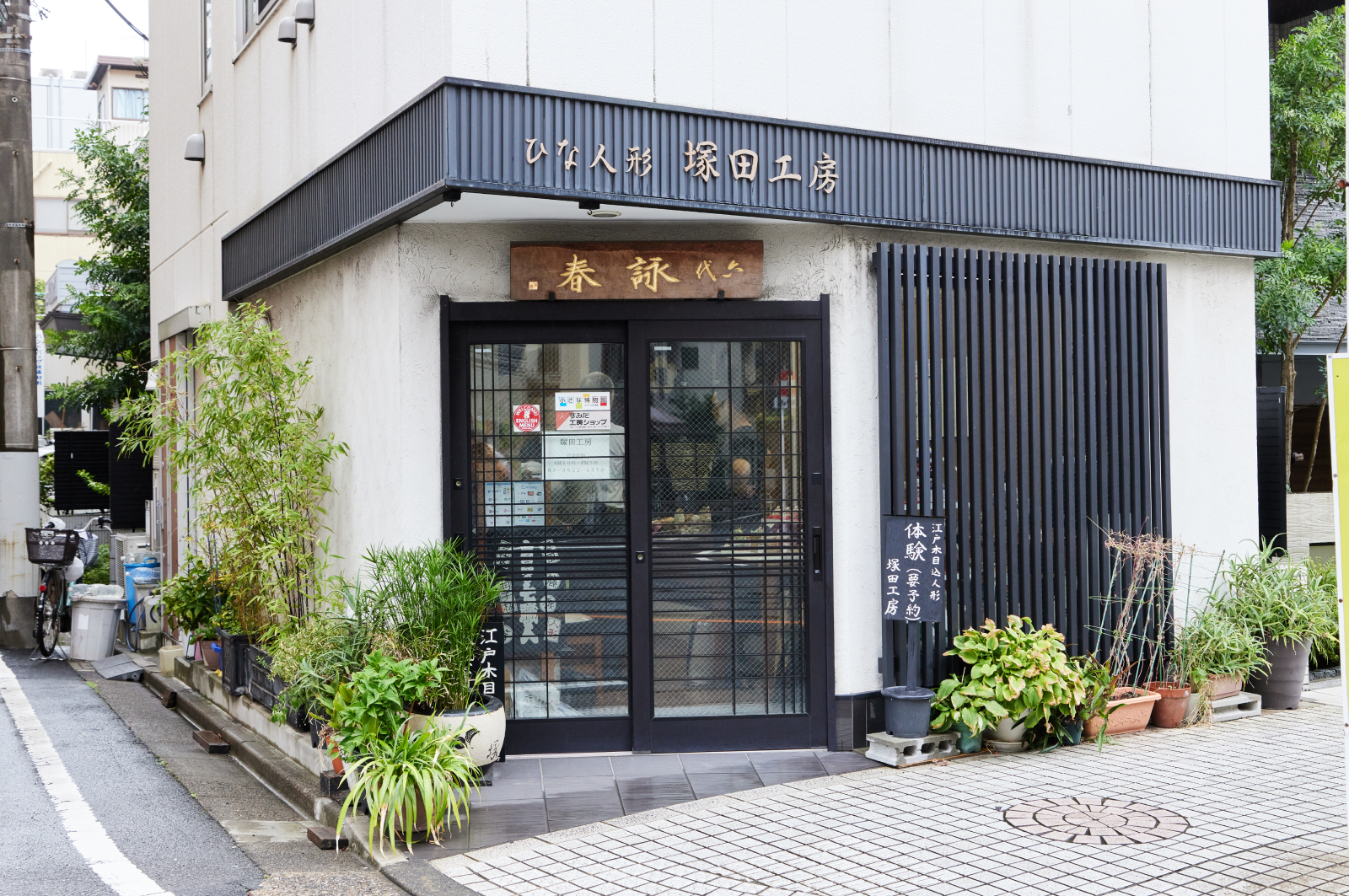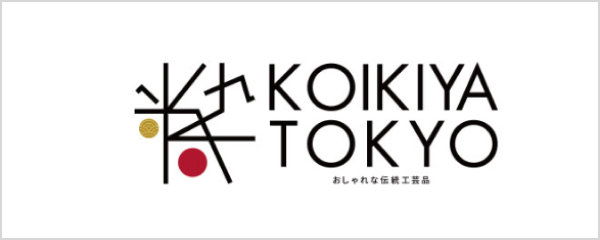Only producing products that meet the traditional craft designation requirements
The Kimekomi doll tradition was born in Kyoto, and Edo Kimekomi dolls are the result of that tradition taking on local characteristics as it passed into Edo. Kimekomi dolls made in Kyoto are known for being slightly rotund with plump faces. And in contrast, Edo Kimekomi dolls are generally slightly thin in shape, with pleasantly delicate, elegant facial features. In addition to dolls, Tsukada-Koubou also makes other products like magnets and has a plentiful track record of recognition, such as receiving an award in The Wonder 500™ that selects amazing regional products as the pride of Japan to promote worldwide, and acquiring certification for Sumida Modern, a project of establishing Sumida area brands and energizing the region.
Edo and Meiji era kimonos come back to life as Kimekomi doll attire
Tsukada-Koubou creates many different kinds of Kimekomi doll clad in gorgeous attire, including one-of-a-kind items like the Edo- Chirimen that uses clippings from Edo and Meiji era kimonos. Reusing kimonos over a century old as attire and taking empress tree shavings, which would normally be thrown away, and using them as materials, could be considered as contributing to SDGs.
Select your favorite fabric and craft your very own original Mawashi- loincloth
In the activity, you tuck cloth into the mawashi loincloth portion of a sumo wrestler doll. First, choose two kinds of fabrics from among the cloth prepared, to be used for the Kesho Mawashi-loincloth and Mawashi loincloth. At this stage, matching the color used for the base coloring and pattern will yield beautiful results. Selecting a dark color can result in the adhesive residue being visible, so if this is a concern, you may want to choose bright colors. At this stage, you'll already be excited to see the finished original Mawashi-loincloth.
This kimekomi activity works down to the delicate details
After you select your clothes, apply adhensive to the doll grooves with a bamboo skewer and tuck in the fabric with a kimekomi spatula. After you press cloth in, remove it, and adjust the size of the cloth by using scissors to cut the outer edge one millimeter from the area where the bond adhered. By altering the size to fit perfectly in the groove, the cloth will fit in beautifully, without poking out. Also, each cloth has its own type of grain, and tucking the cloth in to match the grain of the mawashi loincloth will produce an even more refined looking finished piece.
When the cloth has been tucked into all of the grooves, write your own name or anything else appropriate to you on the plaque, and the piece is finished. You will be amazed at your exquisite set evoking the feel of Japanese tradition, consisting of a sumo wrestler, a dohyo sumo ring, and a plaque.
Our desire to spread joy that includes the significance inherent in dolls
Together with the current decrease in the birthrate, there is also a decline in the number of Hina-ningyo dolls, which is the original base doll format for the Kimekomi dolls. And because Sumida Ward is home to both the sumo district of Ryogoku and the area where the famous artist Katsushika Hokusai was born, Tsukada-Koubou creates products named for both of those famous cultural landmarks. Additionally, product usage has spread from Hina- ningyo dolls to things like magnets and paperweights as well.
In addition to learning that Kimekomi dolls are a traditional Japanese craft, this is your chance to learn about the significance expressed by the dolls themselves and their backgrounds, and experience the amazingness of Kimekomi dolls.
Tsukada-Koubou is an Edo Kimekomi doll studio that has been operated across each generation since 1842. Currently, the production is still being continued by Mr. Eishun Tsukada, the sixth generational head, and Mr. Masahiro Tsukada, the seventh. They specialize in producing many original, one-of-a-kind items made with fabrics, with their main item being the Hina-ningyo doll, and also featuring Maneki-Neko (beckoning cats), owls, and Japanese zodiac symbols. Many of their works have been chosen by the Japan Traditional Kogei-Art Crafts-Exhibition.

